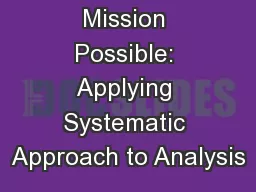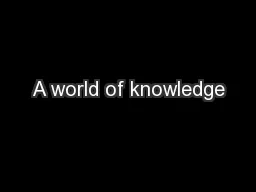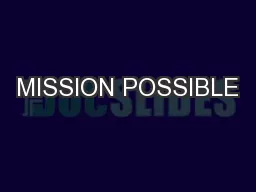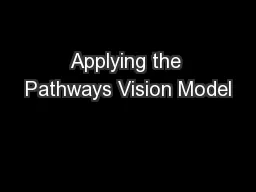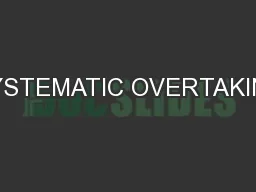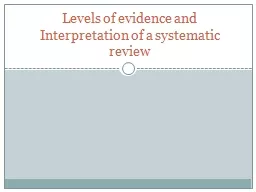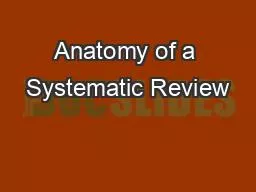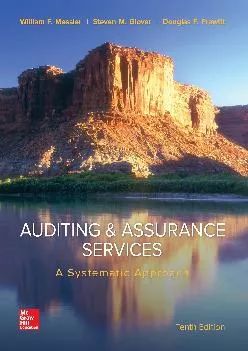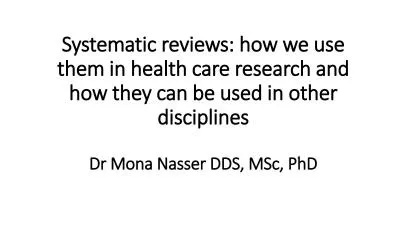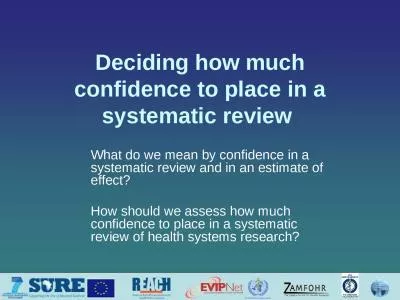PPT-Mission Possible: Applying Systematic Approach to Analysis
Author : ellena-manuel | Published Date : 2017-07-30
Eileen Maeso CPT CDR Jennifer Sinclair April 11 2016 Analysis ISD FEA Harless ABCDHPT SNAHPT Needs Assessment Performance based Gap Analysis Major AccomplishmentsTasksSteps
Presentation Embed Code
Download Presentation
Download Presentation The PPT/PDF document "Mission Possible: Applying Systematic Ap..." is the property of its rightful owner. Permission is granted to download and print the materials on this website for personal, non-commercial use only, and to display it on your personal computer provided you do not modify the materials and that you retain all copyright notices contained in the materials. By downloading content from our website, you accept the terms of this agreement.
Mission Possible: Applying Systematic Approach to Analysis: Transcript
Download Rules Of Document
"Mission Possible: Applying Systematic Approach to Analysis"The content belongs to its owner. You may download and print it for personal use, without modification, and keep all copyright notices. By downloading, you agree to these terms.
Related Documents

